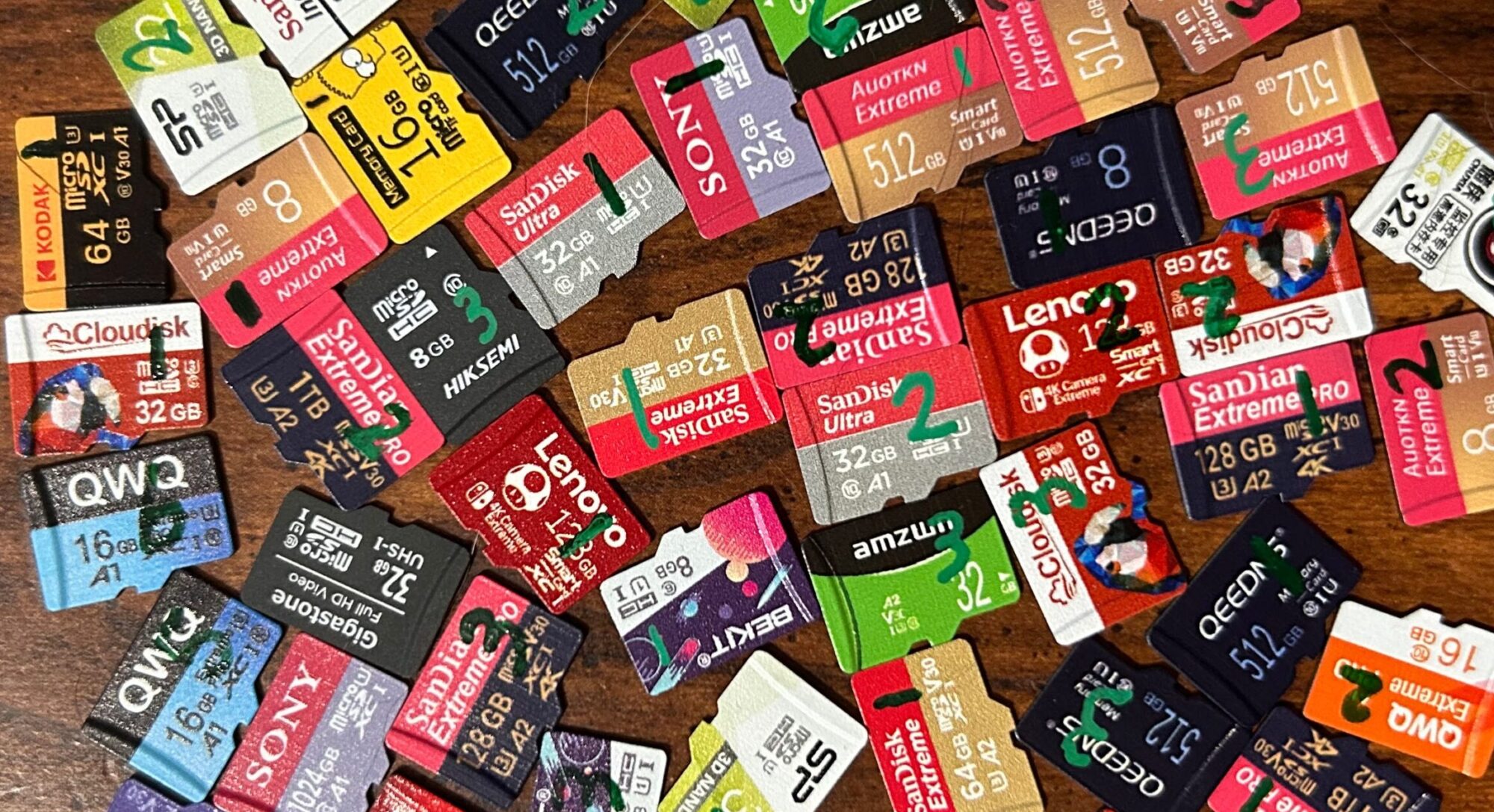This was a brand that I came across while browsing through AliExpress — but a quick search reveals that they’re pretty prevalent on Amazon too.
Surprisingly, this card did not come in a retail package — instead, it came in a simple plastic case. This is unusual, but not unheard of — I’ve had several other cards that came like this. At least these cases were designed to hold microSD cards.
These cards fail the criteria that I set out for determining what is considered a name-brand card for a few reasons:
- The card did not come in retail packaging, and the vendor/manufacturer could not be identified from the contents of the card’s CID register.
- As far as I can tell, the vendor only sells SD/microSD cards.
- As far as I can tell, the vendor doesn’t have a website.
- The information in the card’s CID register bears signs that the vendor was attempting to mask the card’s true origin — specifically, the manufacturer ID was set to hex
fe, and the OEM ID was set to hex3432.
These cards don’t meet the criteria for being considered a knockoff card, which means that they’ll be considered off-brand cards.
These cards bear the Class 10 and U3 markings on them. All three samples performed well enough on the performance tests to qualify for the Class 10 marking; however, none of them performed well enough to qualify for the U3 marking. I’ll throw in my standard disclaimer here: my performance testing methods don’t align with the testing methods prescribed by the SD card specifications; it’s possible that they would have performed better had they been tested under proper conditions.
Note: I previously implied that these cards had the Class 10, U1, and A1 markings on them. That was a mistake — they bear the Class 10 and U3 markings, but they do not have the A1 marking on them.
On the endurance front:
- Sample #1 did make it past the 2,000 read/write cycle mark without encountering any errors — but just barely. It completed a total of 2,188 read/write cycles before becoming unresponsive.
Sample #2 encountered its first error after 1,516 read/write cycles. I finally declared it dead at the end of round 2,279, when the number of bad sectors reached the 50% threshold. Here’s what its progress graph looked like:
Sample #3 experienced its first error during round 876. I don’t know the nature of the error, but it affected over 5% of the sectors on the device in one round — but by the next round, those same sectors did not experience any errors. It continued to experience data verification failures over the next 2,700 or so read/write cycles; it was finally declared “dead” once 50% of the sectors on the card had experience data verification failures. Here’s what the graph of this sample’s progression looked like:
My conclusion: eh. These weren’t the worst performers in my collection, but it sure seemed like they were for a while. There are better options out there for the money.
September 25, 2025

